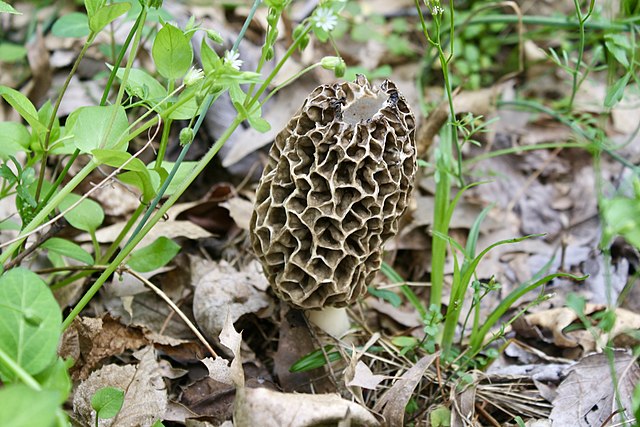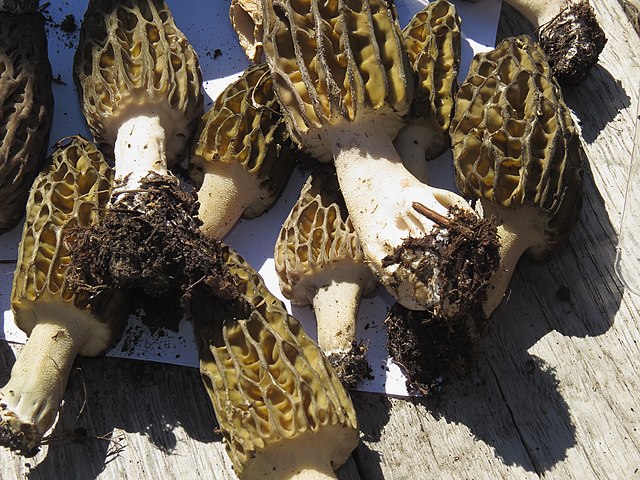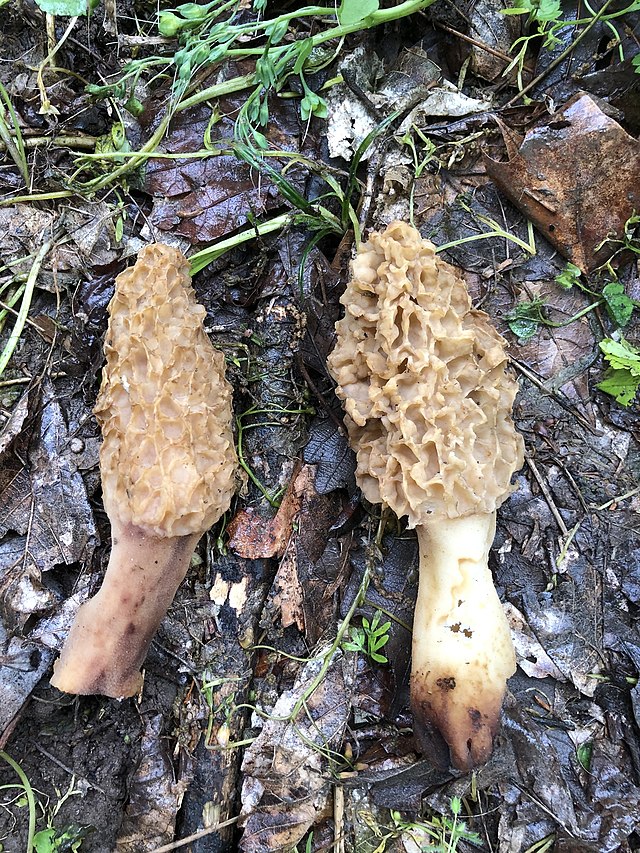
The morel may be considered the queen of the wild mushrooms according to many North American mushroom foragers. It’s full of flavor, but can be difficult to consistently find, and is (almost) impossible to cultivate. All of these traits make it pricey whenever it appears in local markets, and it’s a prized find for personal and commercial collectors alike.
There are several dozen species in the genus Morchella; some are divided up into informal groups according to color, including black, white, and yellow morels. Commonly foraged species in North America include the black morels M. elata, M. angusticeps, and M. importuna, the yellow morels M. esculenta and M. americana, and the white morels M. rufobrunnea and M. anatolica. It’s only been in the past several years that many Morchella species have been described on their own, rather than lumped into one of a smaller number of species.
What morels in general share in common is a cone-shaped cap with a honeycombed texture, and a completely hollow stipe. In most species the bottom edge of the cap is attached to the stipe, though half-free morels have a small space between the stipe and cap’s edge. They fruit in spring, with April and early May often being prime morel time. Many are found in forests; black morels prefer conifers, while deciduous forests have more yellow morels.
Forest Fires and…Landscaping?
Certain species of morel such as M. eximia and M. tomentosa are fire-adapted; after a fire passes through an area, Morchella fungi growing there may produce large number of mushrooms the following spring. This is a way for the fungi to spread as many spores as possible to recover from the fire and take advantage of a lack of competition. It also means that many avid mushroom hunters will venture out into recently burned areas (though some are closed to the public for safety reasons.)
M. importuna is also fire-adapted, but it is notable for another unusual habitat. It likes to grow in wood mulch of the sort often used in landscaping and gardens. This means it may be found in unexpected locations, even in the middle of urban areas!

Wild or Cultivated?
If you see morels for sale in a market, they’re invariably going to have been collected from the wild. Some species are mycorrhizal with trees and won’t thrive without them. Common cultivation methods like sowing spores on substrate have largely been unsuccessful.
However, in 2021 the Danish Morel Project claimed to have grown black morels in a controlled setting, yielding eight pounds per square yard on average. This was after years of experimenting with substrates, climate, and other factors. It is hoped they will be able to commercialize their method and make morels more widely available. Until then, though, we’re all just going to have to forage the old-fashioned way.
Finding and Preparing Morels
When heading out to a potential morel site, pay attention to what trees are growing there, especially dead ones. Morels also need plenty of water, so extra dry soil is not likely to yield them. Soil that is loose is more likely to have them than hard-packed soil. If it’s earlier in the season, head for south-facing slopes that warm up sooner with sunlight; north-facing slopes will grow morels later in the season. If there are ferns starting to grow in an area, that’s about when the morels begin to pop up.
There is an abundance of recipes for morels, from stuffed morels to morel soup to morel risotto and much more. Their rich, nutty flavor makes them the centerpiece of any dish, but they also work well as a simple breaded and fried treat all on their own. Some people let them sit in a bowl of salt water for a half hour or so to drive out any bugs in them, but make sure you dry them off afterward before cooking.
If you have too many morels to eat now, they can be preserved through dehydration. Morels are one mushroom that a small number of people may be sensitive to, so if you are eating them for the first time start with a small amount (just a few bites) and then wait a day or two to see if you get any gastrointestinal upset.

—————
Written by Rebecca Lexa
Rebecca Lexa is a certified Master Naturalist in the Pacific Northwest. She teaches classes on foraging and other natural history topics, both online and off. More about her work can be found at http://www.rebeccalexa.com.
Many of our readers find that subscribing to Eat The Planet is the best way to make sure they don't miss any of our valuable information about wild edibles.
See our privacy policy for more information about ads on this site






